NTP
- 08 Feb 2023
- 1 Minute to read
- Print
- DarkLight
NTP
- Updated on 08 Feb 2023
- 1 Minute to read
- Print
- DarkLight
Article summary
Did you find this summary helpful?
Thank you for your feedback
NTP is a Network Time Protocol server that runs the Debian 10 ntpd daemon. It uses the local clock as the time source. You can use the NTP service to synchronize the clocks of all hosts on your local network.
- Select NTP to add NTP service.
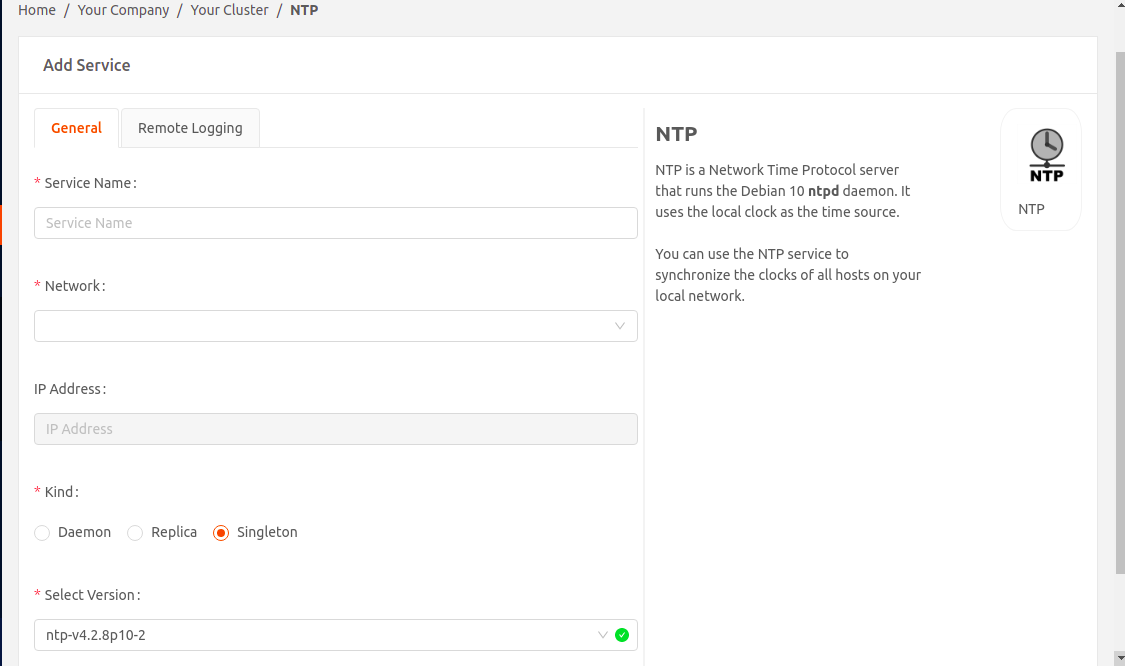
- Enter a name for this service instance.
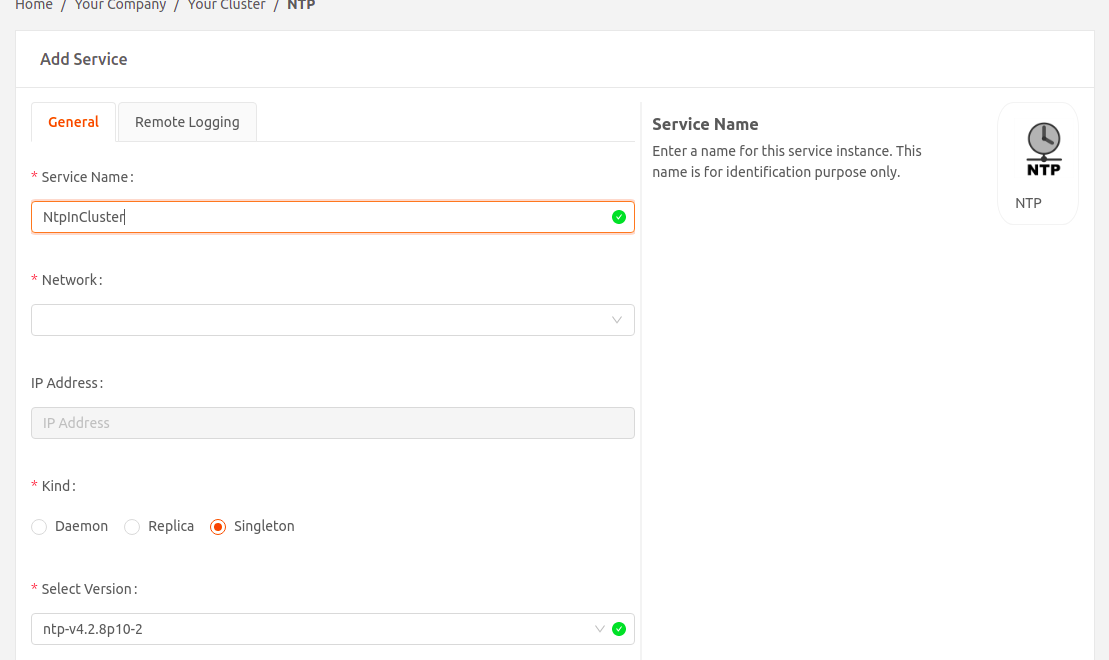
- Select the Network to which this service instance will connect.
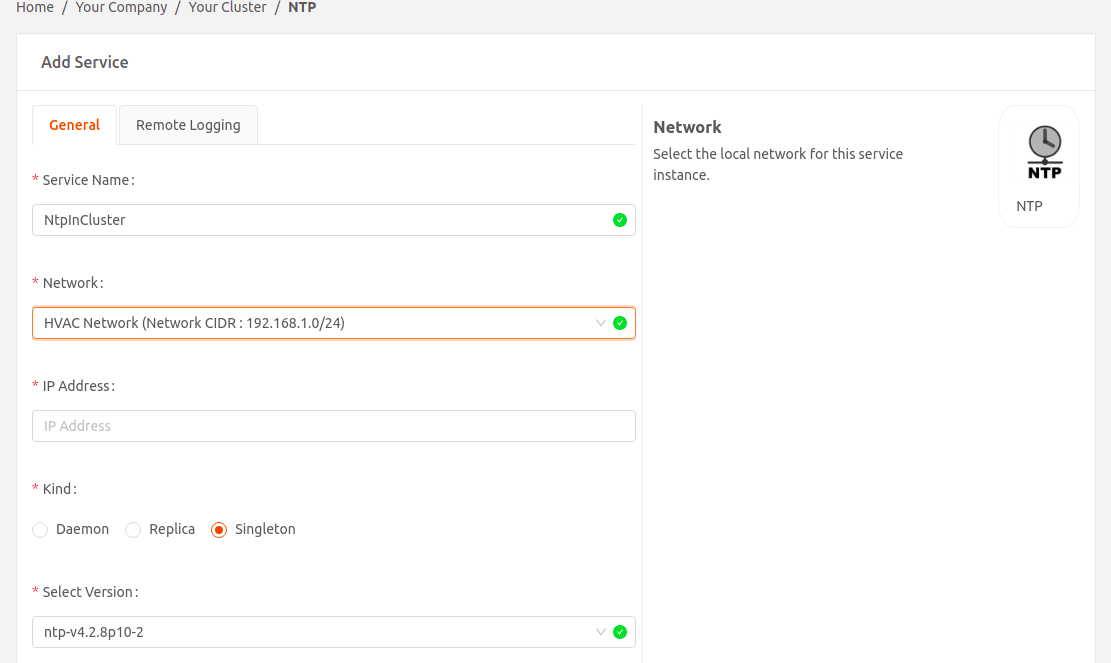
- IP Address: Specify the static IP Address for this service instance. It should be in the same IP subnet as the local network CIDR, but must be outside the range of DHCP offered IP addresses. For example, say the network CIDR of the local network is 10.10.0.0/24, and the DHCP server offers IP addresses in the range 10.10.0.15 - 10.10.0.253. Then the static IP address for this service instance can be in the range 10.10.0.1 - 10.10.0.14.
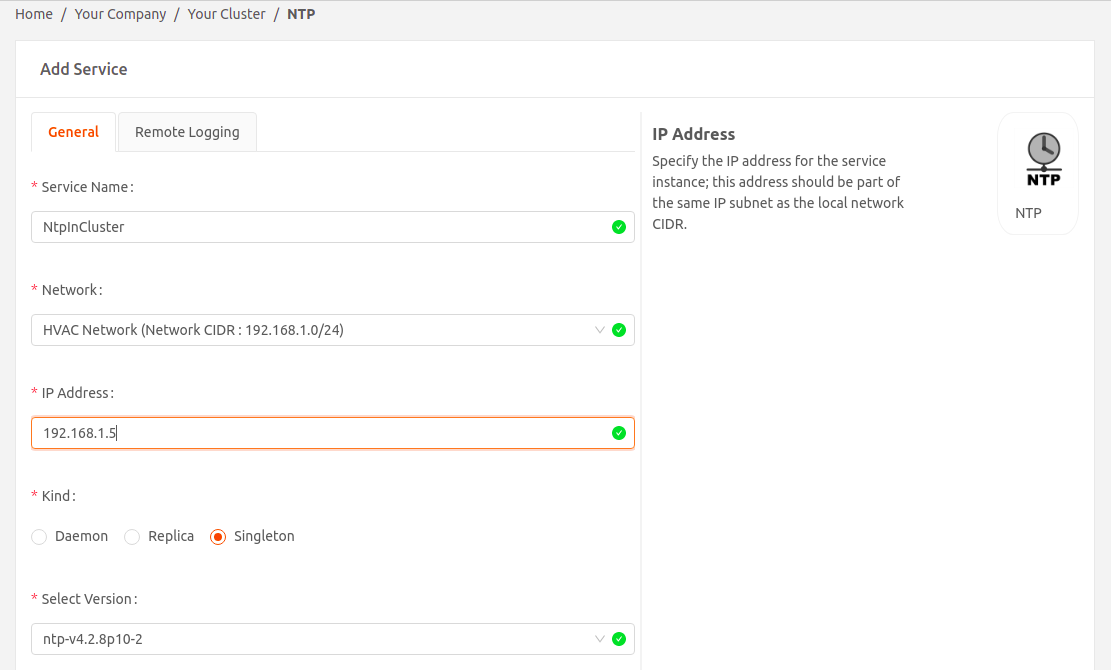
- Kind: Visible only if you're adding the service to an iNode cluster. Select an option to specify how to run the service in the cluster:
- Daemon: One instance of the service runs on all iNodes in the cluster.
- Replica: One instance of the service runs on a set of iNodes that you select using labels in the Run Services in iNodes dropdown.
- Singleton: One instance of the service runs only on the master iNode. If the master fails, it runs on the iNode that gets elected as the new master.You must select the Singleton option for the NTP service to prevent multiple NTP servers running on the same network.
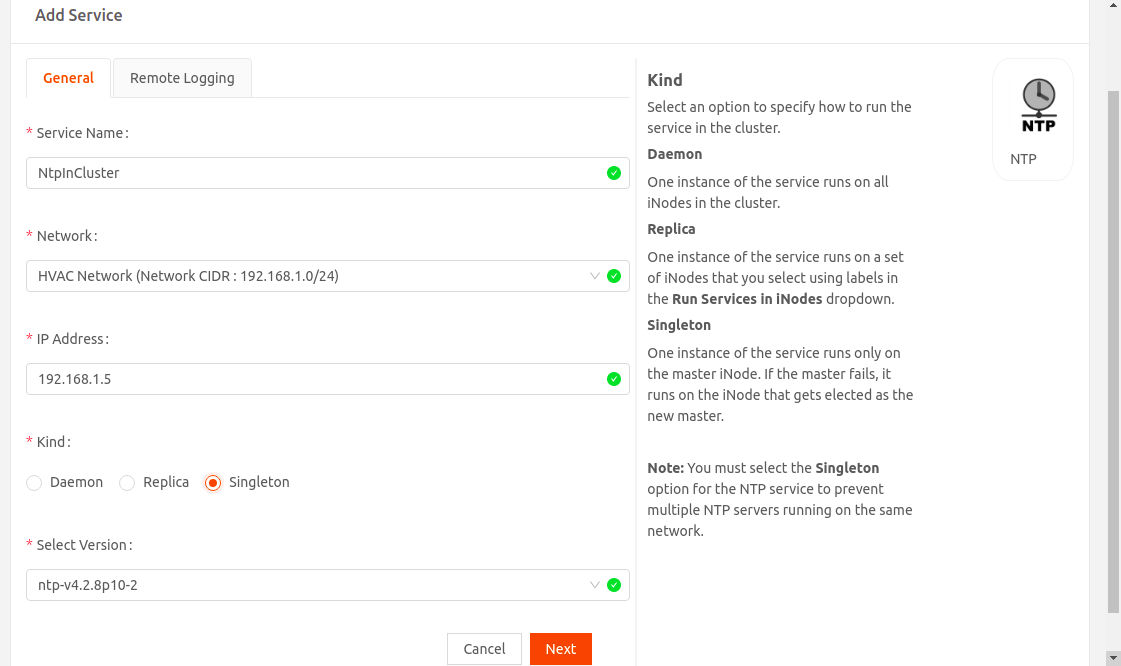
- Select Version: Select the NTP image version.
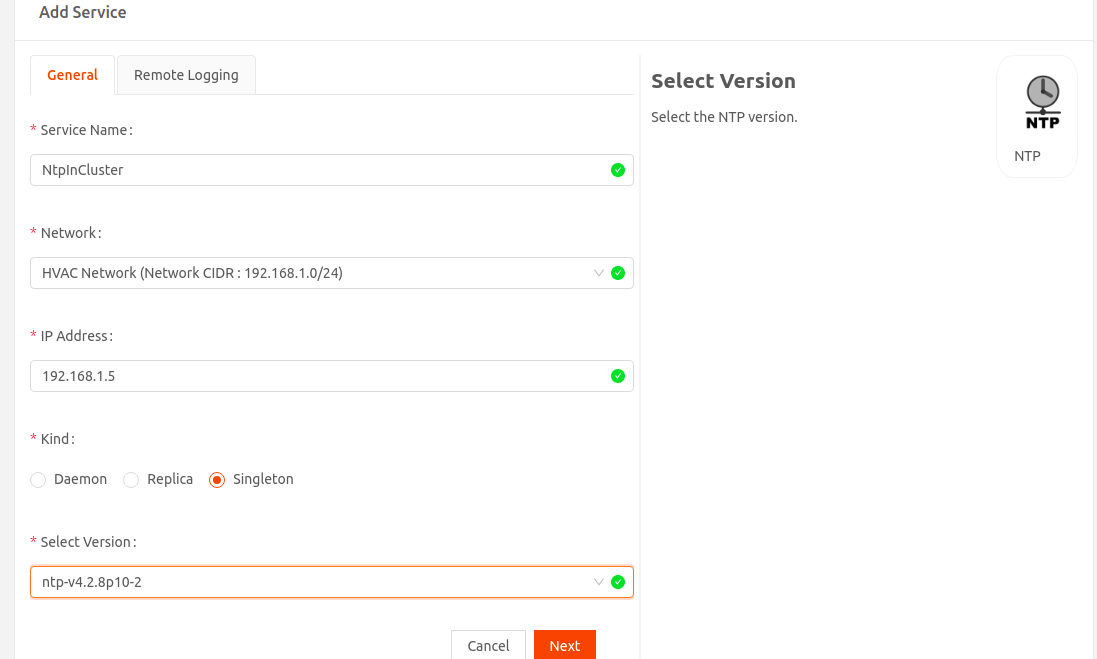
- Select Next to go to the Remote Logging tab.
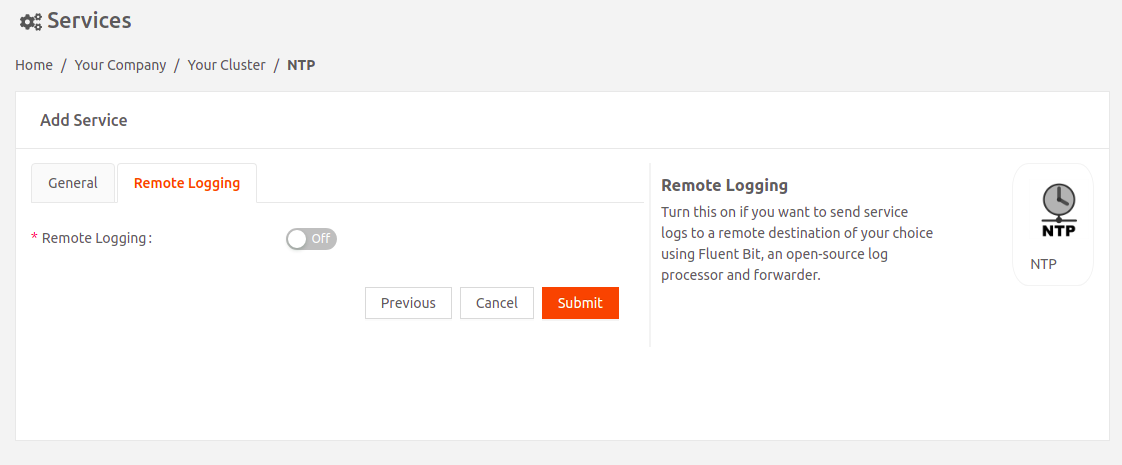
- Turn on Remote Loggingif you want to send service logs to a remote destination of your choice using Fluent Bit, an open-source log processor and forwarder.
- Select Fluent Bit Version: Select the Fluent Bit image version.

- Select an option for the Fluent Bit configuration:
- Either upload a new Fluent Bit configuration (file name of the Fluent Bit configuration must be fluent-bit.conf)

- OR use a Fluent Bit configuration you've uploaded previously.
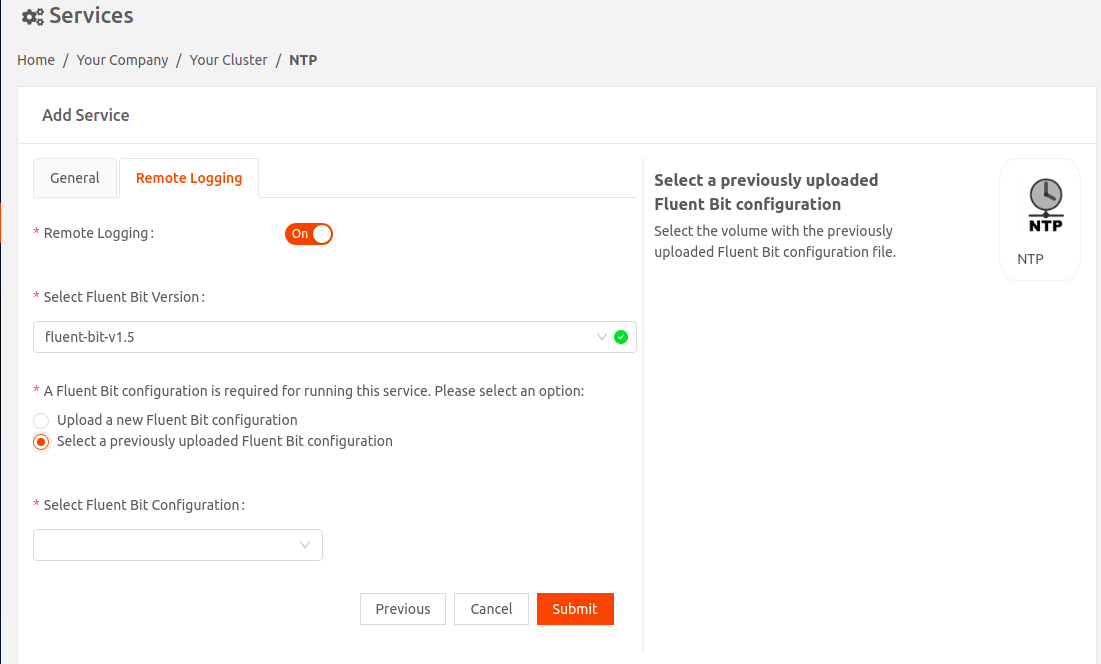
- Either upload a new Fluent Bit configuration (file name of the Fluent Bit configuration must be fluent-bit.conf)
- Select Fluent Bit Version: Select the Fluent Bit image version.
Was this article helpful?











